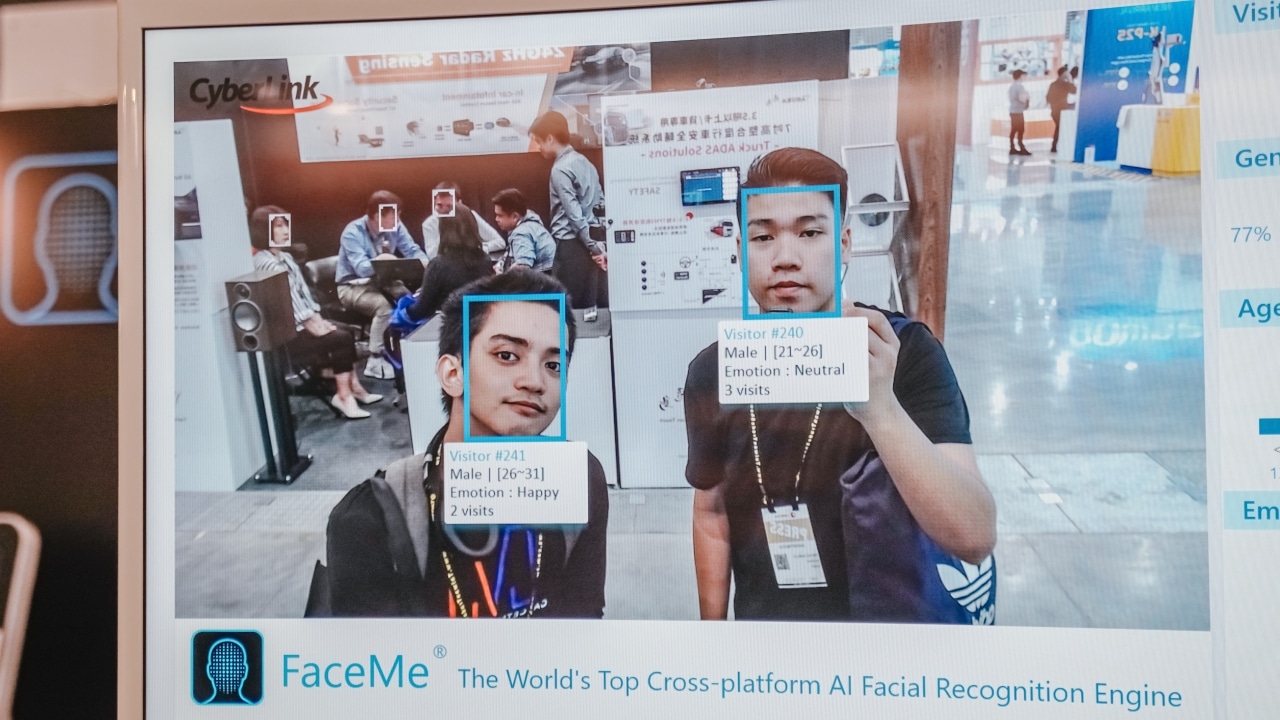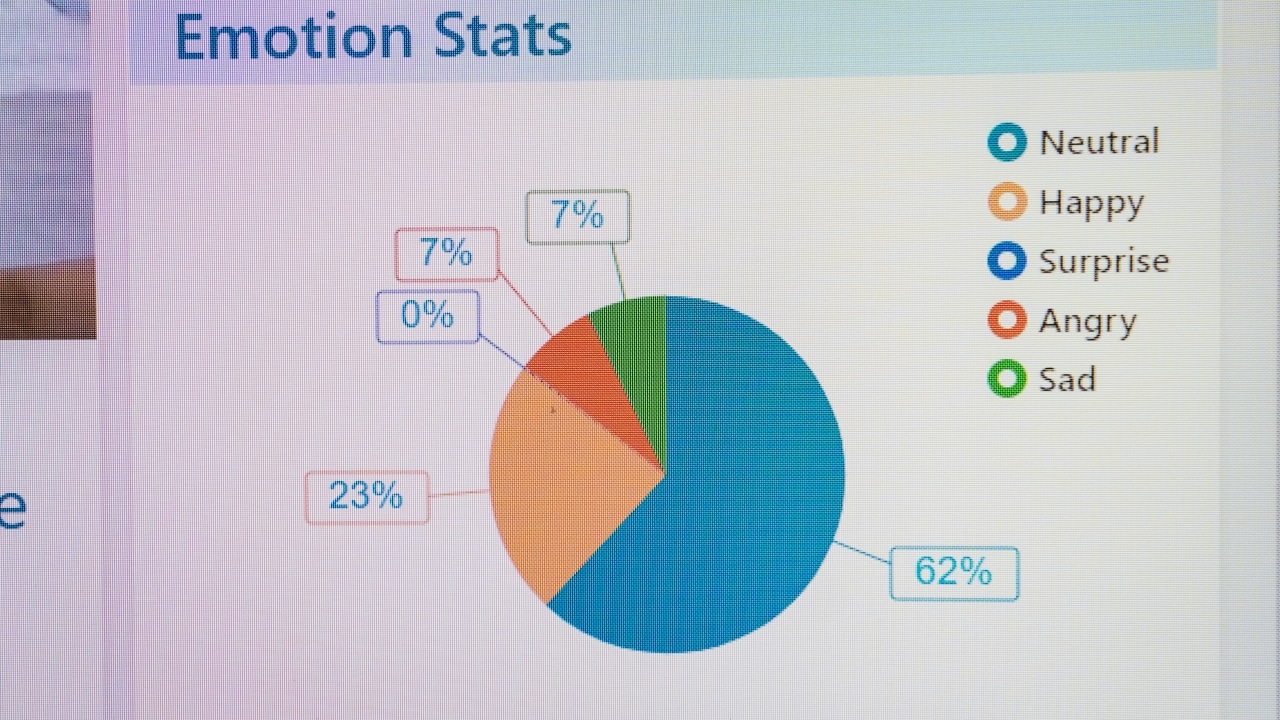

AI or artificial intelligence used to be something we only see in sci-fi movies. Today, AI is very much part of our daily lives with a lot of it deeply embedded in the smartphones we all use.
Apple, through the iPhone X, then introduced AI facial recognition as a secure way to unlock phones. They call it Face ID and it’s widely considered the most secure facial recognition system on smartphones right now. But it’s not perfect. It once failed to tell the difference between two Chinese women.
Before all of these advancements, it was in the 1960s when Woody Bledsoe created a system that detects facial features by plotting coordinates through a tablet. Thus, the facial recognition system was born. It has then made its way to smartphones, laptops, and security cameras.
In Computex 2019, we found CyberLink’s FaceMe. It’s an advanced AI facial recognition system that determines one’s age and emotions through a web camera. To my surprise, it accurately detected my approximate age group — around 21 to 26 years old. I thought the mood detection was subjective as my appearance won’t exactly tell you what I really feel. Bottomline? I found it amusing but scary.
Have you ever wondered how Facebook detects you on other users’ photos? In 2015, Facebook created a deep learning facial recognition system called “DeepFace” that detects faces through images. Innovative? Yes. Creepy? Well, Mark Zuckerberg made headlines when a photo of him surfaced online with his laptop’s webcam had tape covering it. This then led to the speculation that Facebook spies on its users.
Scan my face to pay the money through #Alipay application. pic.twitter.com/9xqmCEehuF
— Allen He (@heling1682002) June 28, 2019
On the other hand, the Chinese government has a totally different way of utilizing facial recognition. While the rest of the world pays through cash or contactless payment, Chinese establishments use AI facial recognition system as one of their primary payment methods along with using WeChat.
That’s just the tip of the iceberg; if you have already seen Black Mirror’s Nosedive, you can relate the story’s plot to China’s “Social Credit System”. They score points or earn rewards by doing good deeds such as following traffic rules, volunteering, or even donating blood. They can they use the the points and rewards to buy goods.
Having debt or legal troubles will lower your credit. Punishments include a ban from traveling outside the country and not being able to buy your own property. It even goes as far as being shown through the “reel of shame” where “laolai” (a derogatory term for citizens who failed to pay their debts) were named and shamed during a film premiere — just like how it happened in an Avengers: Endgame screening.
Huawei, despite being a Chinese brand, has been successful in gaining customers’ satisfaction and trust in just a short time. Those on the Western side think the opposite: The US government accused Huawei of spying but US later lifted the ban. Even the arrests of their officials in Europe and Canada are undeniable. The commotion between US and China even opened a lot of discussions about spyware, including the safety and danger of AI facial recognition systems.
A lot of questions still remain. Do we really consider facial recognition our friend for keeping our data safe and secure from others? Or is it becoming our foe after all these allegations about the government and companies spying on us? One thing is for sure: AI facial recognition is far from being flawless.


Fans all over the world gathered in Taiwan to witness the festivities of Computex 2019. Several tech companies showcased what’s ahead for the industry, from all-around devices to gaming peripherals. ASUS’ star shined even brighter during the event as one of their biggest booths had people buzzing and raving all throughout.
ASUS boasted its experiential Republic of Gamers (ROG) booth, the company’s biggest at Computex. The booth showcased the latest and greatest of ASUS’ ROG lineup for gaming peripherals and hardware. Visitors were greeted with a design that hopes to evoke the future of gaming as ASUS envisions it. It showed off the latest in the ROG’s thermal, portable and panel solutions.
The booth featured ASUS ROG’s latest ROG Strix and Zephyrus laptops sporting bigger and more responsive screens. The ASUS ROG Strix SCAR III and Strix Hero III G731 are the first gaming laptops to boast a 17-inch, 240Hz refresh rate screen. Apart from that, these two laptops will also sport the latest NVIDIA RTX 2070 graphics card that promises superb gaming performance.
ASUS ROG also featured its collaboration with BMW for its ROG Face Off laptop. Through this concept laptop, the primary focus is to reflect gamers’ unique tastes and preferences. In this extensive collaboration, the company showed off several ROG Strix and Zephyrus laptops in a bold Glacier Blue color.
Perhaps the most visited attraction is the Thermal Solutions area that houses the ROG Mothership announced back in CES 2019. Visitors got a chance to try out ASUS’ take on a portable gaming battle station loaded with Battlefield V. Of course, this was done to show off its impressive overall performance and unique thermal solution.
Computex 2019
WUDI-IDI Arctic Neck Cooler and Bluetooth Speaker
The product you never knew you needed

Startup products are something we shouldn’t underestimate. WUDI-IDI is a Taiwan-based brand that has made these neck coolers come to life. While these products are still not in mass production, the idea of creating this lifestyle product is innovative.
Both coolers feature three-speed fans, but there’s a common difference between the two variants — the Arctic Neck Cooler features a thermoelectric cooler with heat dissipation brick and cold aluminum in order to relieve the heat you feel whenever it’s placed on your neck.
The other cooler lacks the additional cooling feature but you can play your favorite music or Spotify playlist by just connecting your phone to its built-in Bluetooth speaker. Forgot your phone? The built-in microSD slot solves your dilemma. You don’t wanna disturb everyone? You can also plug your earphones through its 3.5mm audio jack.
All those features explain why this product was tagged as the Best Lifestyle Product of Computex 2019. It’s the perfect accessory not just for athletes, but also among consumers who just can’t stand the heat.

This is another product we found from Computex 2019. UYAS is a Taiwan-based startup brand that made the Play, a WiFi-based wireless speaker. Instead of the ordinary Bluetooth speakers, this speaker lets you connect not just one, but multiple devices all at once.
By downloading the UYAS app, you can play your favorite songs and/or playlists from either YouTube or Taiwan’s KKBOX. You can even play music videos straight from YouTube. You can also control it through its touchscreen display, your phone or even via voice command.
The speaker doesn’t disappoint with its overall aesthetics — it has a kickstand but you can also mount it on a wall. The speaker covers are also magnetic which means they are easily changeable, which all depend on your room’s interior (or even your mood).
-

 Accessories2 weeks ago
Accessories2 weeks agoApple Vision Pro Review: Two Months Later
-

 Features5 days ago
Features5 days agoFortify your home office or business setup with these devices
-

 Gaming1 week ago
Gaming1 week agoThe Rogue Prince of Persia looks like an ultra-colorful roguelite
-

 Philippines2 weeks ago
Philippines2 weeks agovivo Y100 to release in Philippines on April 27
-

 Gaming1 week ago
Gaming1 week agoStar Wars Outlaws release date revealed
-

 Events1 week ago
Events1 week agoStellar Blade: PlayStation taps cosplayers to play Eve for game’s launch
-

 Accessories1 week ago
Accessories1 week agoLogitech unveils G Pro X 60 gaming keyboard: Price, details
-

 Deals2 weeks ago
Deals2 weeks agoSamsung Awesome April: Deals on Galaxy A series



































